How to grow garlic in 6 simple steps
Here’s how to grow garlic from cloves
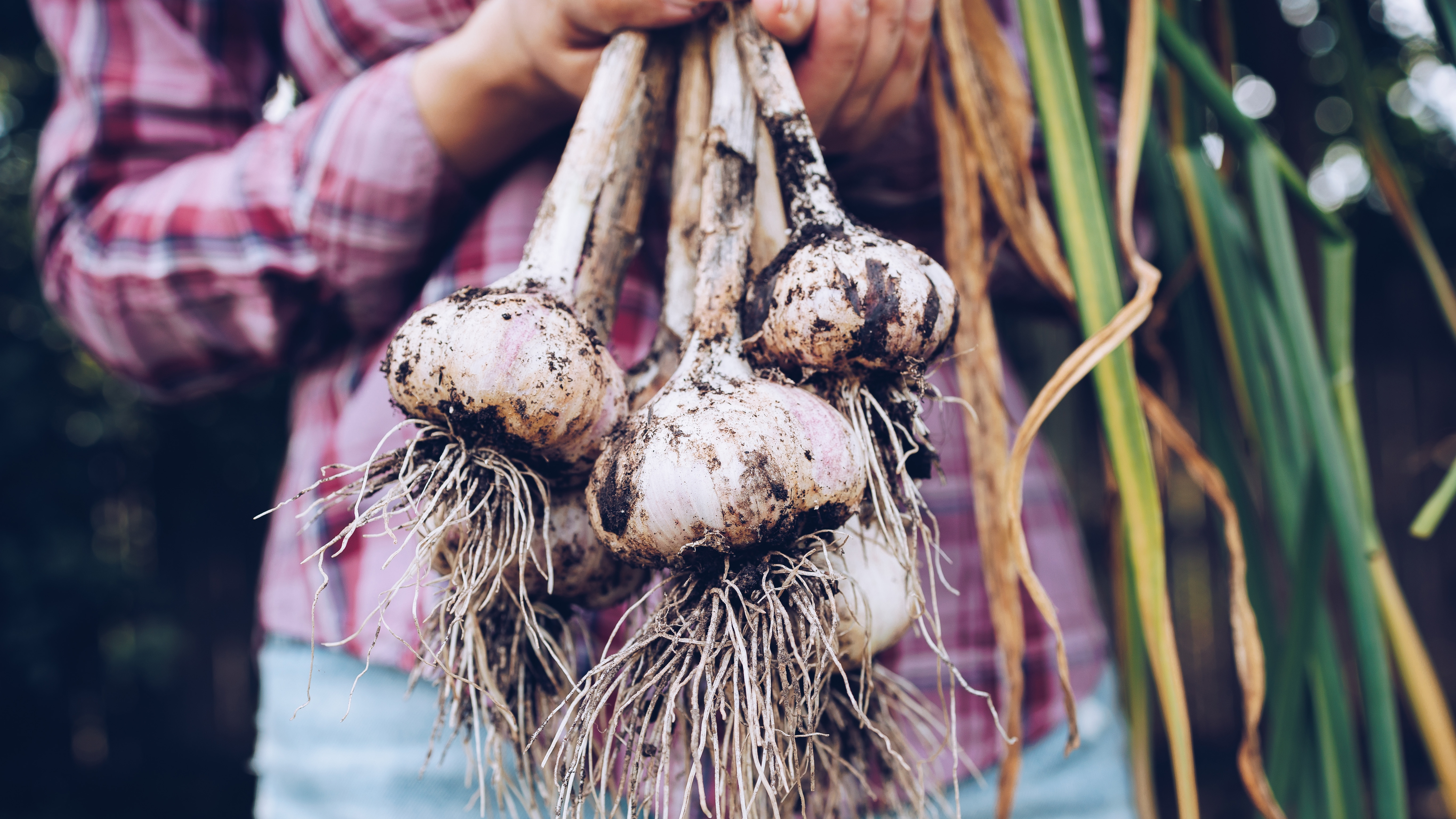
Knowing how to grow garlic can give you your own supply of this vegetable year after year. Garlic is used to complement all kinds of dishes, from sauces and soups to breads and salads. For this reason, we’re often picking up a cluster of bulbs at the grocery store. But, did you know you can actually grow your own garlic? It’s not that tricky either, much like learning how to plant potatoes. And you can then add it direct to your recipes using one of the best garlic presses, such as the GarlicZoom.
Not only will this save you the expense of purchasing fresh garlic — as garlic lasts up to a year when stored properly, it gives you a steady supply on demand, with limited waste. Plus, the task of growing your own vegetables is rewarding in itself and always makes them somehow taste better. You know there’s no chemicals or pesticides involved and you know exactly where they’ve come from. If you’ve decided to take the plunge and grow your own garlic, here we will guide you through the process step-by-step and answer any questions you may have along the way. Here’s how to grow garlic.
Want to expand your vegetable garden, be sure to also check out how to grow tomatoes from seeds, and here are 10 vegetables you can grow in pots.
How to grow garlic
1. Select the best type of garlic for your yard — Before we go into detail, you first need to pick out the best variety of garlic to grow in your soil and climate. You unfortunately can’t just grab a clove of garlic from a store-bought bulb. These will have been treated with all kinds of chemicals during the growing process, so you’re not likely to yield great results from them.
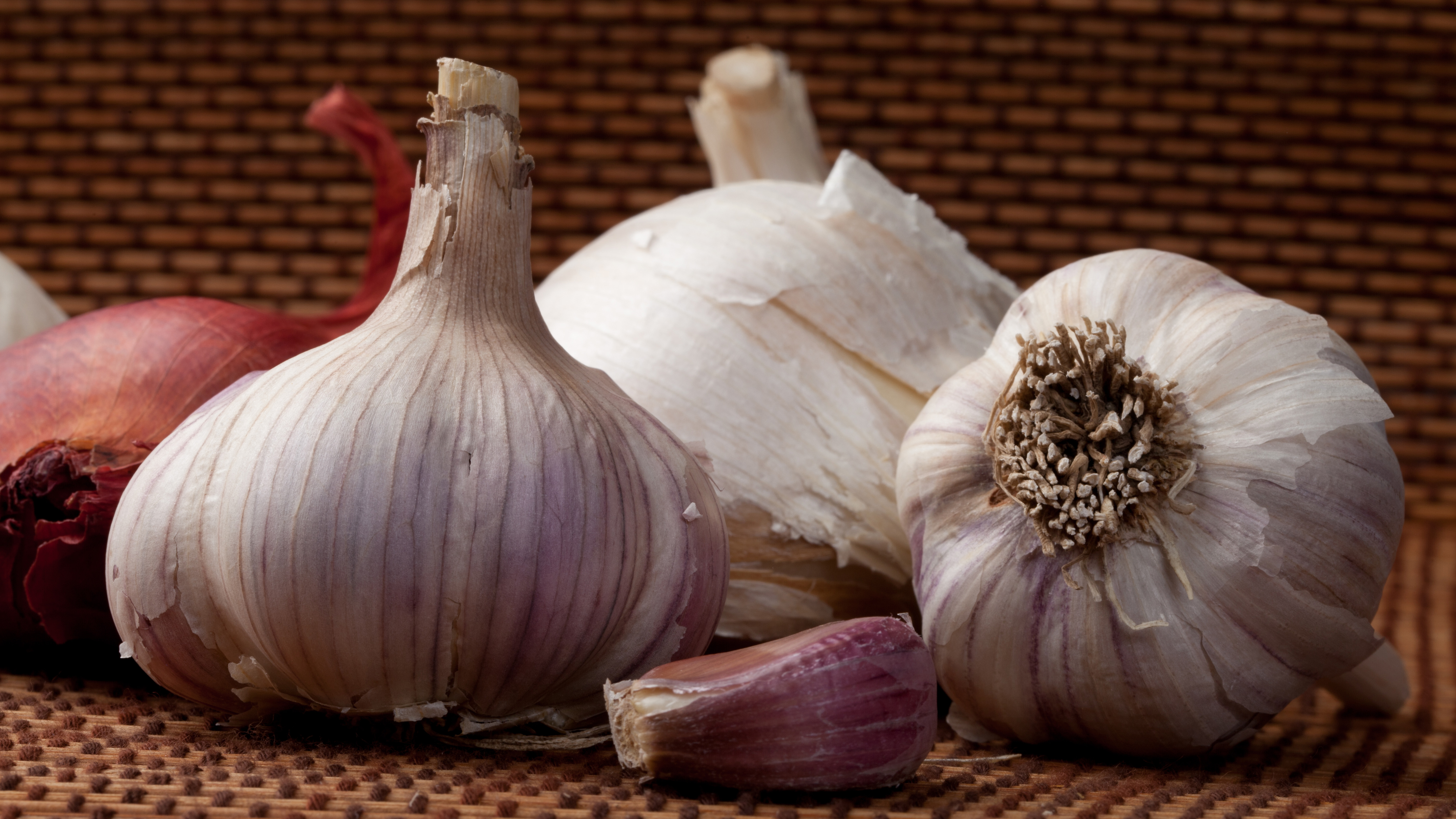
There are two types of garlic — hardneck and softneck. Hardneck types are more robust and better grown in colder temperatures, so they’re more suited to northern states. Softneck garlic grows best in warmer climates, so southern gardens are preferable. There are a couple of key differences between the two:
- You will get fewer, but generally larger cloves from hardneck versus softneck. Softneck garlic offers a cluster of smaller cloves.
- Hardnecks grow flower stalks, known as scapes, which you can also eat.
- Softneck garlics generally store better and last longer — up to twice as long as hardneck types.
- Softneck garlic will literally have a soft, flexible neck, so you can braid this variety.
Hardneck garlic generally is more flavordul compared to softneck, but much comes down to the specific garlic variety you choose. Some offer more spice, while some are sweeter than others. Decide what you want to cook with and do your research to pick out the best garlic before you start.
2. Buy your bulbs — As mentioned before, never use garlic from your grocery store. Instead, buy fresh seed garlic from a dedicated seed supplier or a trusted online store. You can even buy these from Amazon, such as these Fresh California Softneck Garlic Bulbs ($9.29, Amazon). Why not plant more than one variety of garlic to see which grows best?
Sign up to get the BEST of Tom's Guide direct to your inbox.
Get instant access to breaking news, the hottest reviews, great deals and helpful tips.
You can always use last year's harvest for fresh cloves so you won't have to buy new bulbs every year. Bear in mind that garlic seeds actually refers to the cloves themselves — that’s what you will be planting here.
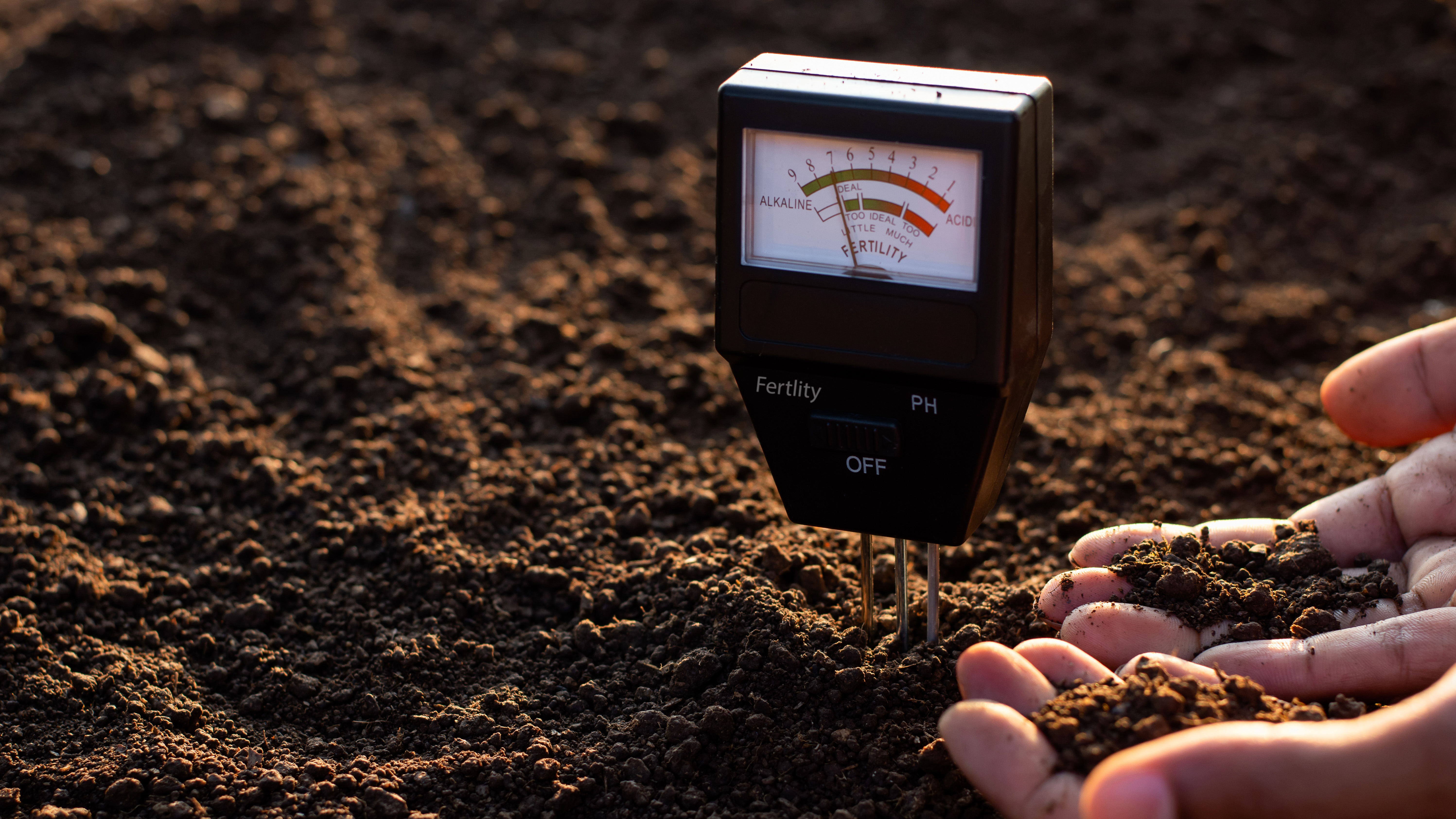
3. Choose the best spot in your yard and prepare the soil — Select a spot that gets plenty of sunlight (at least six hours a day) and make sure you have enough space to grow what you need. Each clove will be planted at least 4 inches apart for reference. Mix compost or manure into the top few inches of soil before planting your cloves. Be sure to really work the soil and make sure it's loose and drains well; this is best for garlic. Use a soil test kit, such as the Luster Leaf Soil Test Kit ($15.99, Amazon), to check the pH levels and make any adjustments if needed. Garlic likes the pH between 6.0 and 7.0 for reference.
4. Plant the cloves — Break your bulbs apart, leaving the papery skins intact. Use the biggest cloves to get the best results, checking them over for disease before planting. The flat end with roots will be facing down, while the pointed end will be upright. Plant each clove about 2 inches deep in the soil, and space each about 4-6 inches apart. You can then set your rows about 10-12 inches apart. This will give each of your cloves adequate space to grow. Water your freshly planted cloves and place a layer of mulch on top to protect them from the dropping temperatures — this will also help to retain moisture. Aim for about 6 inches of mulch for adequate protection.
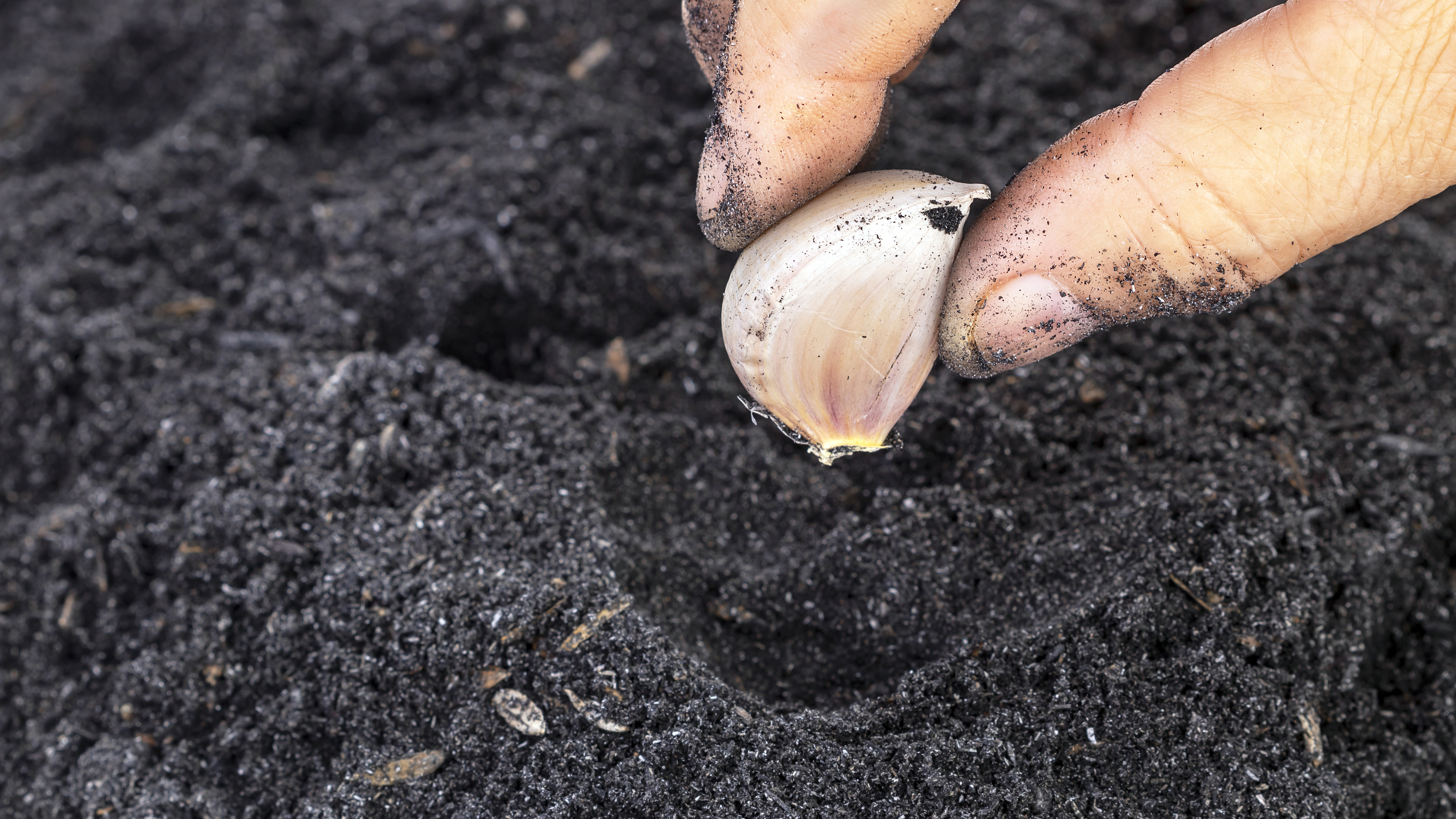
4. Maintain your garlic — Now that the seeds are planted, you just need to maintain them. Your cloves will need about ½ to 1 inch of water every week — any more or less than this and your crop will fail. Keep an eye on the weather conditions and adjust your application as necessary. Watering during the winter months won't be necessary. When spring arrives and temperatures pick up, you can remove the mulch and hopefully shoots will start to appear all too soon. Apply fertilizer in the spring to aid growth — we recommend Burpee Bone Meal Fertilizer ($12.99, Amazon).
If you’re growing garlic of the hardneck variety, remove any curly flower stalks as they grow; these garlic scapes, as they're called, will actually reduce the bulb size because energy is being dedicated to the stem. However, the scapes are edible, so you can chop these up and add to dishes for a mild garlic essence.
You will need to fertilize your garlic once more as the bulbs start to expand and bulge — this is usually in May. Be sure to remove any crabgrass and dandelions that rear their ugly heads in your vegetable patch over this time as well. Keep watering regularly as the bulbs grow, although you can reduce the supply and stop in the final weeks — otherwise you will be encouraging disease.
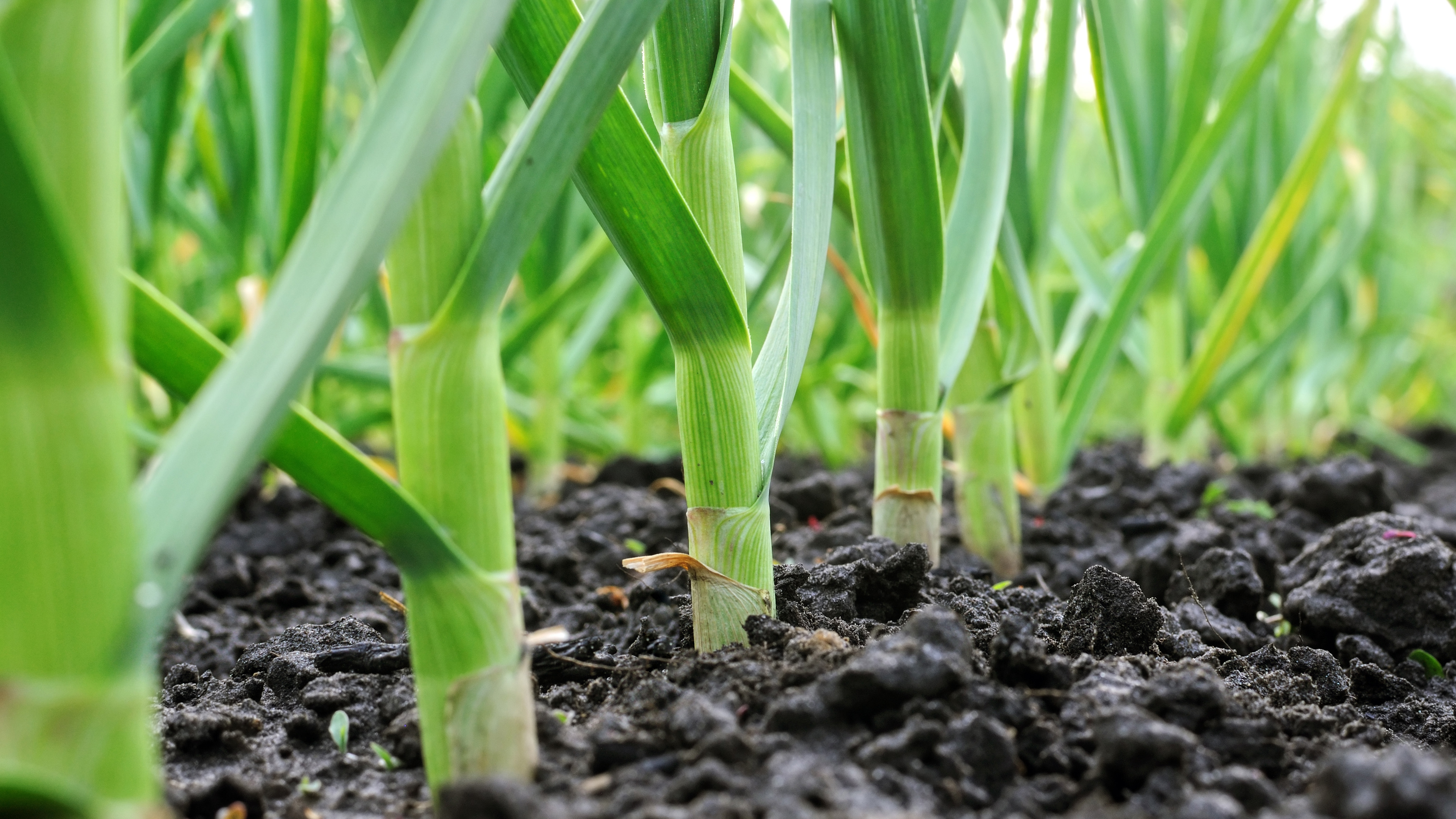
5. Harvest your garlic — The time has come at last to harvest your home-grown garlic. Generally, garlic planted in the fall will be ready by August, although this can vary depending on the variety of garlic. You can tell your garlic is ready once the lowest three leaves begin to brown and collapse — if you’re cautious you can always dig up one and check its condition before moving onto the rest. Gently dig up a bulb with a garden fork, being careful not to pierce or damage any parts — whatever you do, don’t pry the garlic up from the stem, like you would a carrot; this will likely just cause damage. Inspect the first bulb; you’re looking for plump and bulging cloves and a thick, papery layer on the outside. If you’re happy with what you see, you can continue harvesting. Don’t remove the stalk, foliage or roots from your garlic at this stage.
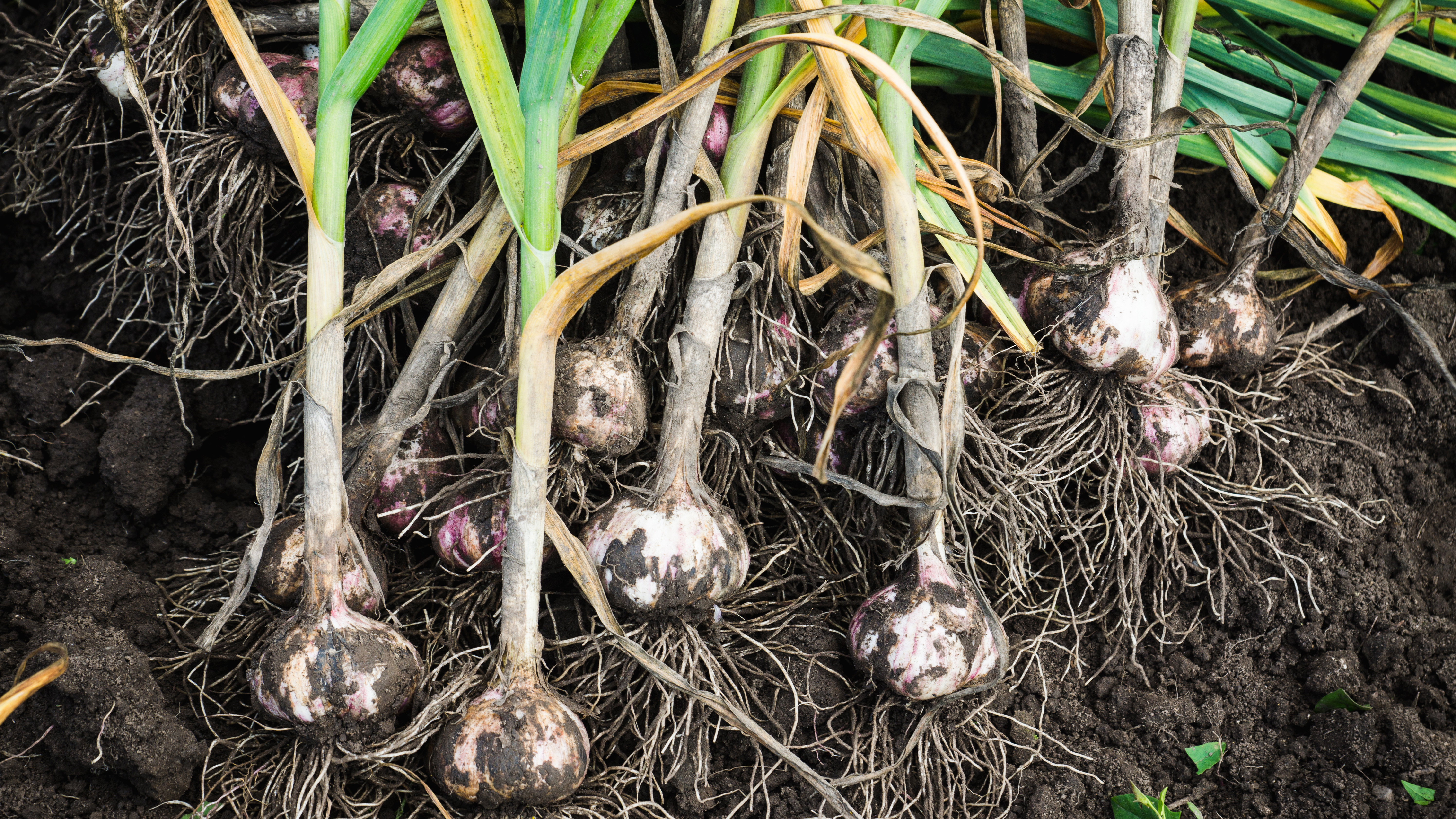
6. Store your garlic — Your garlic will be ready to eat as soon as you dig it up, but if you’ve got multiple plants, you will likely want to store the majority. First, you will need to cure the bulbs — this essentially gives them a chance to harden prior to long-term storage.
Find a dark, covered, dry space which gets good air circulation and maintains a consistent temperature. Basements make for ideal curing spaces for this reason. You can hang your garlic up or place them flat on an open surface — in either case they will need about two weeks to fully harden. Once time is up, your garlic can be stored as normal for future use. Don’t wash them prior to storing, it’s essential to keep them dry. But you can cut the stalks off now, or braid them if flexible.
Keep your bulbs in a dry, dark and cool space in the long term. Depending on the type of garlic, your harvest will still be good for another four months up until a year! Remember to keep some back for next year's seeds.
When is the best time to plant garlic?
Garlic is typically planted in the fall, often in late October, so you still have time to take advantage. The main rule of thumb is that it should be planted before the first frost hits. There’s no hardened rule however — garlic can even be planted in the spring time for a summer harvest, although you should plant as early as possible to get the best results.
For more planting tips, tricks, and how-tos, check out our guides on how to plant grass seed, how to plant sunflower seeds, how to grow asparagus and 9 easiest vegetables to grow for beginners.

Katie Mortram used to be a Homes Editor for Tom's Guide, where she oversaw everything from kitchen appliances to gardening tools, as well as smart home tech. Specializing in providing expert advice for cleaning and home manintenance, she now works as Household Advice Editor for Good Housekeeping.
